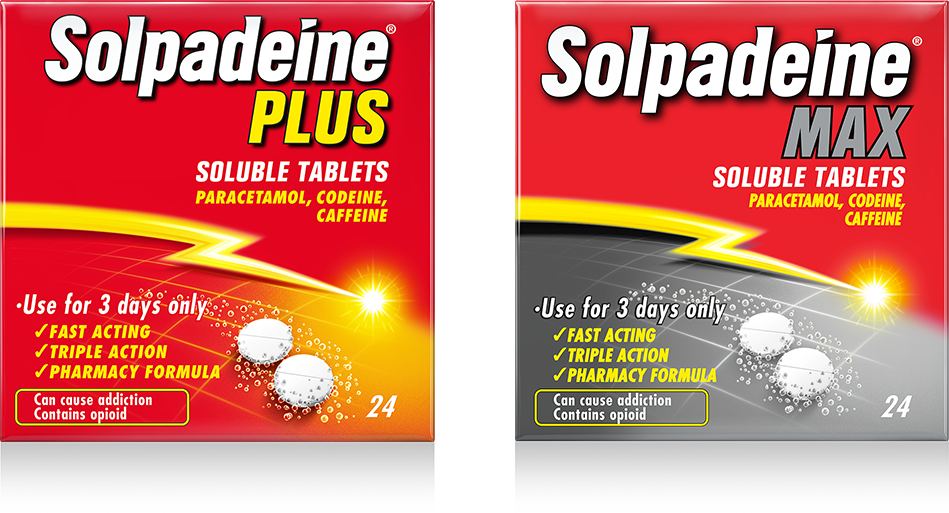Understanding different types of head pain
From a dull ache when we are feeling a bit overtired, to more painful throbbing or stabbing sensations in our skulls and flashing lights before our eyes…
Aug 18 2021 · 2 min read

From tablets and capsules, to liquids and creams, pain relief medicines come in a range of ‘formats’ and people often favour one type more than another. Here’s how – and why – they differ…
When you go to buy pain relief medicine from your pharmacy or supermarket it can seem like there is an endless choice or formats, and it can be hard to work out which one will best suit your needs.
The first thing to understand is that the format of a medicine can influence how quickly it dissolves in the stomach, be absorbed into the bloodstream, and get to work. In general the fastest-acting formats are those that can be rapidly absorbed – such as liquid formats or effervescent tablets – whereas tablets and caplets take longer to break down in the stomach. Moreover, how long it takes for a medication to dissolve can vary from person to person[i].
This means, for many of us, the type of format we choose to buy our pain relief medicines in comes down to personal preference – and here are the main choices:
• Tablets come in different types. Some need to be swallowed – such as caplets, which are often coated with a substance that makes them smooth and easier to swallow – but soluble or dispersible tablets can safely be dissolved in water and then drunk. For this reason tablets combine the active ingredients with another substance to either keep them solid or make them dispersible, and are pressed into a round or oval shape [ii].
• Capsules contain the active part of the medicine inside a plastic shell that dissolves slowly in the stomach. Like tablets, some need to be swallowed whole so the medicine isn’t absorbed until the stomach acid breaks down the capsule shell. Other capsules can be safely broken apart to make them easier to take by mixing the contents with food[ii].
• Liquid medicines are also known as ‘mixtures’, ‘solutions’ or ‘syrups’. They combine the active ingredient with a liquid to make the medicine easier to take or better absorbed – with many now available with no added sugar[ii].
• Some pain relief products also come as topical medicines in the form of creams, lotions or ointments that are applied directly to the skin[ii].
If you are put off taking a particular type of pain relief medicine because of the format it comes in, your pharmacist will be able to recommend other options that might suit you better.
For example, if you have difficulty swallowing – known as dysphagia – or simply don’t like swallowing pills, ask your pharmacist if the pain relief product you want comes in a liquid or soluble formulation[iii]. They will also be able to advise you if you could crush tablets or capsules instead – as some are OK to take this way, but others are not .
Solpadeine has created its Solpadeine Max, Solpadeine Plus, Solpadeine Headache and SolpaOne pain relief products in a range of solid and soluble tablets and capsules, so there’s a format to suit your preference and need. However, as with all medicines, and medical conditions, if the pain you are experiencing does not improve with a few days, or gets worse, speak to your GP or call 111 for further help and treatment options.
References:
i. How Does The Body Metabolize Medication?
ii. Types of medicines _ Great Ormond Street Hospital
https://www.gosh.nhs.uk/conditions-and-treatments/medicines-information/types-medicines/
iii. NHS Conditions: problems swallowing pills
https://www.nhs.uk/conditions/problems-swallowing-pills/
From a dull ache when we are feeling a bit overtired, to more painful throbbing or stabbing sensations in our skulls and flashing lights before our eyes…
From keeping hydrated and getting enough sleep, to cutting out alcohol and managing stress, there are lots of ways to head off a headache before it starts.
There are as many treatments for back pain as there are causes, but as prevention is better than cure, there are also plenty of ways to prevent back pain in the first place.
Solpadeine® Max Soluble Tablets, Paracetamol 500mg, Codeine Phosphate Hemihydrate 12.8mg, Caffeine 30mg For the treatment of acute moderate pain which is not relieved by paracetamol or ibuprofen alone. Contains codeine. Can cause addiction. Use for 3 days only. Always read the leaflet.
Solpadeine® Headache Soluble Tablets contain Paracetamol and Caffeine – a mild analgesic and antipyretic formulated to give extra pain relief. Always read the leaflet.
Solpadeine® Plus, Solpadeine® Max and Solpadeine® Headache products are not recommended for children under 12 years of age.
SolpaOne® 1000mg Effervescent Tablets contains paracetamol. For the treatment of mild to moderate pain and/or fever. For adults and adolescents over 50kg of body weight aged 16 years and above. Always read the leaflet.
Same trusted formula
Now in 3 day treatment packs, in line with guidance

*New pack size of 24 soluble tablets for 3 day use in adults